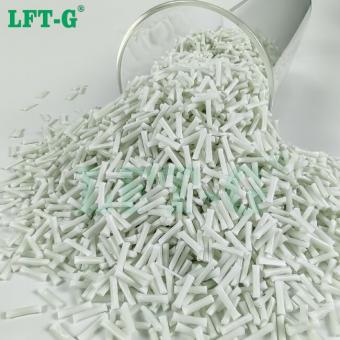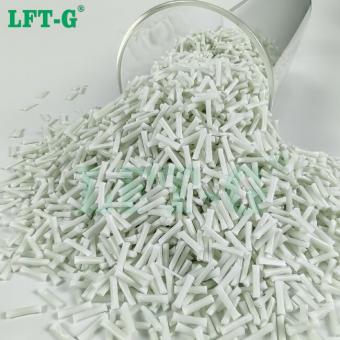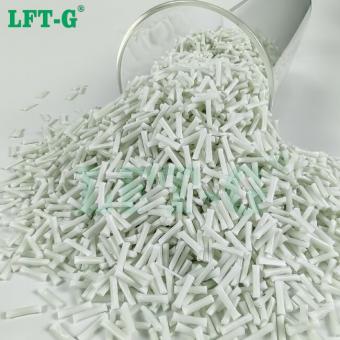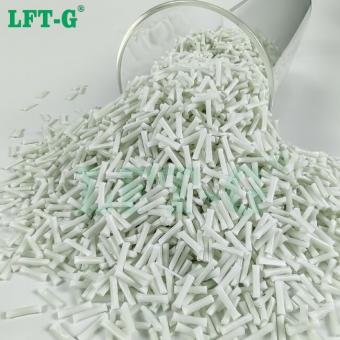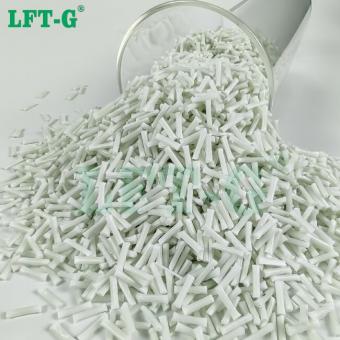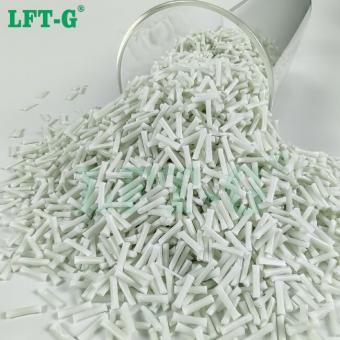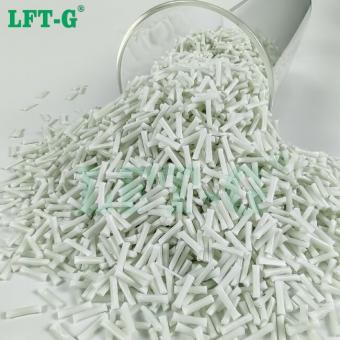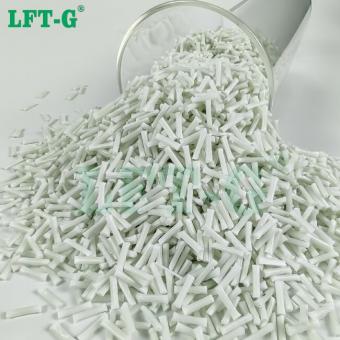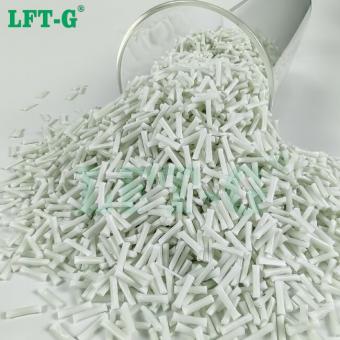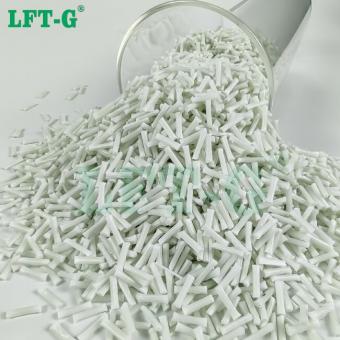Long Glass Fiber Rinforced Thermoplastic HDPE granules.
-
LFT High Density Polyethylene HDPE high performance Long Glass Fiber reinforcementHDPE has a higher density compared to other polyethylene variants, making it more rigid and stronger.
- Long Glass Fiber Reinforced HDPE
- High-Strength HDPE Composites
- Fiber-Reinforced Plastic (FRP) Materials
- Lightweight Composite Materials
- HDPE Composite Material Applications
- Thermoplastic Composites for Automotive
Tags :
-
Long Glass Fiber Reinforced Composites HDPE Series CopolymerThis material combines high-density polyethylene (HDPE) with long glass fibers for enhanced mechanical strength, impact resistance, and dimensional stability. It is ideal for structural applications requiring durability, lightweight, and chemical resistance, commonly used in automotive, industrial, and outdoor products.
- LFT-G
- Industrial plastic components
- HDPE for structural applications
- Reinforced HDPE plastic
- Engineering thermoplastics supplier
- Impact-resistant thermoplastic
Tags :
-
UV Resistant PE Long Glass Fiber Polymer PelletsClassified as a thermoplastic polymer in the polyethylene family, HDPE exhibits exceptional resistance to moisture, chemicals, and impact. This resilient and dense material is produced through the process of polymerization, resulting in a robust and durable substance.
- virgin pellet
- polypro pellets
- fiber reinforced hdpe composite pipe
- long fibre reinforced pellets
- lft pellets
- plastic pellets
Tags :
-
Xiamen LFT-G HDPE filling long glass fiber thermoplasitc reinforced compoundsHigh-density polyethylene (HDPE), also called polyethylene high-density (PEHD), is a thermoplastic polymer made from the monomer ethylene. When used for HDPE pipes, it is sometimes called "alkathene" or "polythene." With a high strength-to-density ratio, High-density polyethylene (HDPE) is used to produce corrosion-resistant piping. In addition, HDPE is commonly recycled.
- HDPE filling lgf20
- lgf hdpe composite materials
- reinforced hdpe plastic resin
- long glass fiber hdpe
- Thermoplastic hdpe lgf
- hdpe resin compounds
Tags :
-
Glass Fiber Reinforced PE High Density Resin Pellets Injection MoldingThis material combines high-density polyethylene (HDPE) with long glass fibers for enhanced mechanical strength, impact resistance, and dimensional stability. It is ideal for structural applications requiring durability, lightweight, and chemical resistance, commonly used in automotive, industrial, and outdoor products.
- hdpe glass
- metal replacement solutions
- thermoplastic composite materials
- long fibres composites
Tags :
-
Excellent Regidity PE Long Glass Fiber Plastic Injection MoldingThis material combines high-density polyethylene (HDPE) with long glass fibers for enhanced mechanical strength, impact resistance, and dimensional stability. It is ideal for structural applications requiring durability, lightweight, and chemical resistance, commonly used in automotive, industrial, and outdoor products.
- pe high density
- pe high density material
- high density polyethylene density
- high density polymer
- high density polyethylene
Tags :
-
High Density Polyethylene Composite Pellets with 20-60% Long Glass Fiber ContentHDPE long glass fiber reinforced material provides improved stiffness, strength, and impact resistance, making it suitable for demanding applications. It is widely used in automotive components, industrial containers, and outdoor equipment that require durability and lightweight performance.
- fiber glass density
- high density polyethylene tube
- high density polyethylene uses
- high density polyethylene polymer
- high density polyethylene properties
Tags :
-
LFT High Density Polyethylene Long Glass Fiber filled CompositesThis material combines high-density polyethylene (HDPE) with long glass fibers for enhanced mechanical strength, impact resistance, and dimensional stability. It is ideal for structural applications requiring durability, lightweight, and chemical resistance, commonly used in automotive, industrial, and outdoor products.
- hdpe fiber
- fiber glass manufacturer
- polyethylene high density
- high density polyethylene pipes
- high density polyethylene weight
- high density polyethylene plastic
Tags :
-
Impact Resistant Long Fiber HDPE Lightweight and ToughLong Glass Fiber Reinforced High-Density Polyethylene (HDPE-LGF) is a high-performance thermoplastic composite made by reinforcing HDPE resin with long glass fibers using a continuous fiber impregnation process. Compared to short glass fiber filled HDPE, this material offers significantly enhanced mechanical properties, fatigue resistance, creep resistance, and structural stability, while retaining HDPE’s excellent chemical resistance and processability.view more
-
HDPE injection molding filling long glass fiber thermoplasitc compoundsOur long glass fiber reinforced HDPE material offers exceptional strength, impact resistance, and dimensional stability, making it ideal for structural and industrial applications. Designed for lightweight performance and durability, it’s widely used in automotive, logistics, and heavy-duty injection molded parts.
- HDPE GF reinforced
- fiber-reinforced polymers (FRP)
- OEM HDPE composite manufacturer
- PE LGF manufacturer
- chemical-resistant HDPE
- high stiffness HDPE for engineering applications
Tags :
-
Reinforced HDPE-LGF High Toughness Structural MaterialThis high-performance composite material is based on High-Density Polyethylene (HDPE) reinforced with long glass fibers (LGF) through continuous pultrusion technology. It is specially engineered to overcome the mechanical limitations of traditional HDPE by significantly enhancing its strength, stiffness, and dimensional stability — while retaining the excellent chemical resistance and low density of HDPE.
- lft g for automobile market
Tags :
-
High Strength Excellent Impact Resistance HDPE Long Glass Fiber Enhanced MaterialHDPE (High-Density Polyethylene) long glass fiber reinforced material utilizes advanced long glass fiber technology to significantly enhance mechanical properties while maintaining the lightweight nature of HDPE. Compared to conventional HDPE, this material offers higher rigidity, strength, and impact resistance while retaining excellent chemical resistance and weatherability.
- pe plastic resin
- pe pipe
- high density PE
- glass fiber filled PE
- Enhanced plastic pellets
- China plastic factory
Tags :

 e-mail
e-mail English
English français
français Deutsch
Deutsch русский
русский italiano
italiano español
español português
português العربية
العربية 日本語
日本語 한국의
한국의 中文
中文












